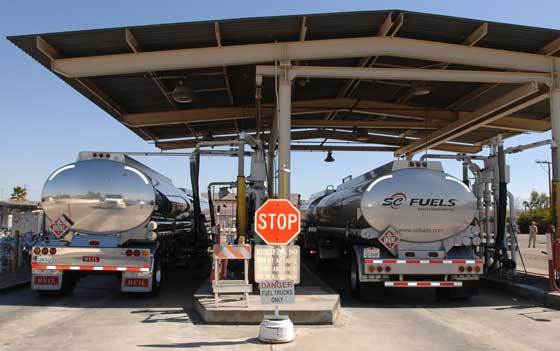
The following article by AFS Northeast Territory Manager Barry Aruda was published in the Sept./Oct. issue of Indoor Comfort Marketing.
It’s no secret that ultra-low sulfur products have taken over the distillate pool in New England. First, our high-sulfur blends of diesel fuel switched over, followed a few years later by the advent of ultra-low sulfur heating oil. Reducing sulfuric acid in our atmosphere has led to the championing of a common message: We’re cleaner now, which is great for our industry and our customers.
Many people have asked me what the difference is between ultra-low sulfur diesel and ultra-low sulfur heating oil. They look the same, they smell the same and, hey, they probably taste the same. So, what makes them different? The short answer is nothing, really, save (should it be except for taxes) for taxes and federal regulations (you aren’t using heating oil in off-road vehicles).
My expertise in the diesel/oil industry is advanced chemical application or, in short, additives. That’s what I do for a living—helping diesel jobbers, heating oil companies, and customers with gen-sets—deal with the everyday problems that middle distillates can cause—in today’s case, the unstable nature of fuel. Ultra-low sulfur blends of fuel are more hygroscopic, meaning they like moisture much more than their predecessors, but unfortunately can’t hold that moisture as well, leaving stored fuels susceptible to water entrainment, microbial contamination and corrosion, thereafter.
I’ve conducted many trainings and presentations that were focused on chemical technology to help our fuels do the job they were made to do. That is, perform in today’s diesel engines the way they’re supposed to. Similarly, to help heating oil do its job in a basement without becoming spoiled when time and temperature changes become involved. Long story short, many folks using additives in the field today, may not know which additives are supposed to do what, when it comes to ULSD and ULSHO.
Take a recent conversation I had with a retail heating oil dealer. Now, this is a third-generation, multi-state company with a wealth of experience storing and moving distillates. During our conversation, the topic of desulfurization came up, and how one additive could be used across the board because, “after all, diesel and heating oil are the same today.”
Look, he’s not wrong. Chemically, those fuels are about equal. The issue is his usage of a diesel additive inside heating oil. That’s an issue if, for nothing else, his wallet. Why?
First of all, diesel additives and heating oil additives have different dosing rates. One diesel additive may dose at 1 : 2,500, and a heating oil additive may dose at 1: 20,000. But maybe money isn’t an issue (hard to believe). The more troubling aspect of this dealer’s philosophy, is what is the application for the fuel?
Today’s diesel engines require specific componentry in the additives they take in. The recipe almost always focuses on detergents, lubricity enhancements, and moisture dispersant. ULSD application needs can vary in many ways, including engine size (class), work environment, and duty-cycle. Lubricity is paramount for a diesel engine, regardless of what the vehicle is doing, with all of the moving parts moving in a violent, high-heat environment. Not to mention the extremely stringent PSI inside the injector housing. If someone is using a heating oil additive in diesel, they’re not protecting what they should be.
Similarly (as in the case of my dealer friend), he was using a diesel additive inside his heating oil, believing everything would be fine since, chemically, these base fuels are the same.
Unfortunately, a Carlin or Beckett burner does not do the things a Cummins or Paccar engine does. The worlds could not be more different. Heating oil application needs are tied to the needs downstream, specific to oil burners and fuel tank storage. Therefore, the chemical application and strategy for fuel quality must be different. Most heating oil sits for a long while, inside basement tanks and oil lines for the summer months, just waiting for the burner to call. What’s it doing in there? Without an appropriate additive, one focused on stabilization and inhibiting corrosion, it could be costing the dealer and customer, as fuels degrade. Diesel additive in heating oil is incorrect application, incorrect dosing, and an expense that may cost you in the long run.
Not all fuels are created equal, nor is proper fuel conditioning. Consider where your additives are coming from. Did you buy them off a shelf in a retail environment? How much does the cashier at Tractor Supply or Walmart know about that bottle? The answer, sadly, is often “not much” or “nothing.”
Whether or not you have never used additives before, have shopped some, or have a company you have utilized for some time, you need to be sure what you plan to purchase has been formulated for your specific application. It used to surprise me how many folks out there often get it wrong. Not all fuels are created equal—that is correct—neither are additives. Believe us, in the last 25 years, we’ve seen just about everything.
Cough syrup can’t fix a broken bone, and an arm-cast is never going to cure a headache. But, medical anecdotes aside, the world of middle distillates is not too different. Application is key, and remedying an aching and complicated fuel problem often takes a professional diagnosis.
Education is key, and there are professionals in our industry willing and able to help you navigate you to your specific business goals. Examine your fuel quality program, think conceptually, and ask yourself why you are using what you’re using. If the answer is “I don’t know” or “I’ve always done it this way,” it might be time to pick up the phone.
Finally—square-peg, meet square-hole.

